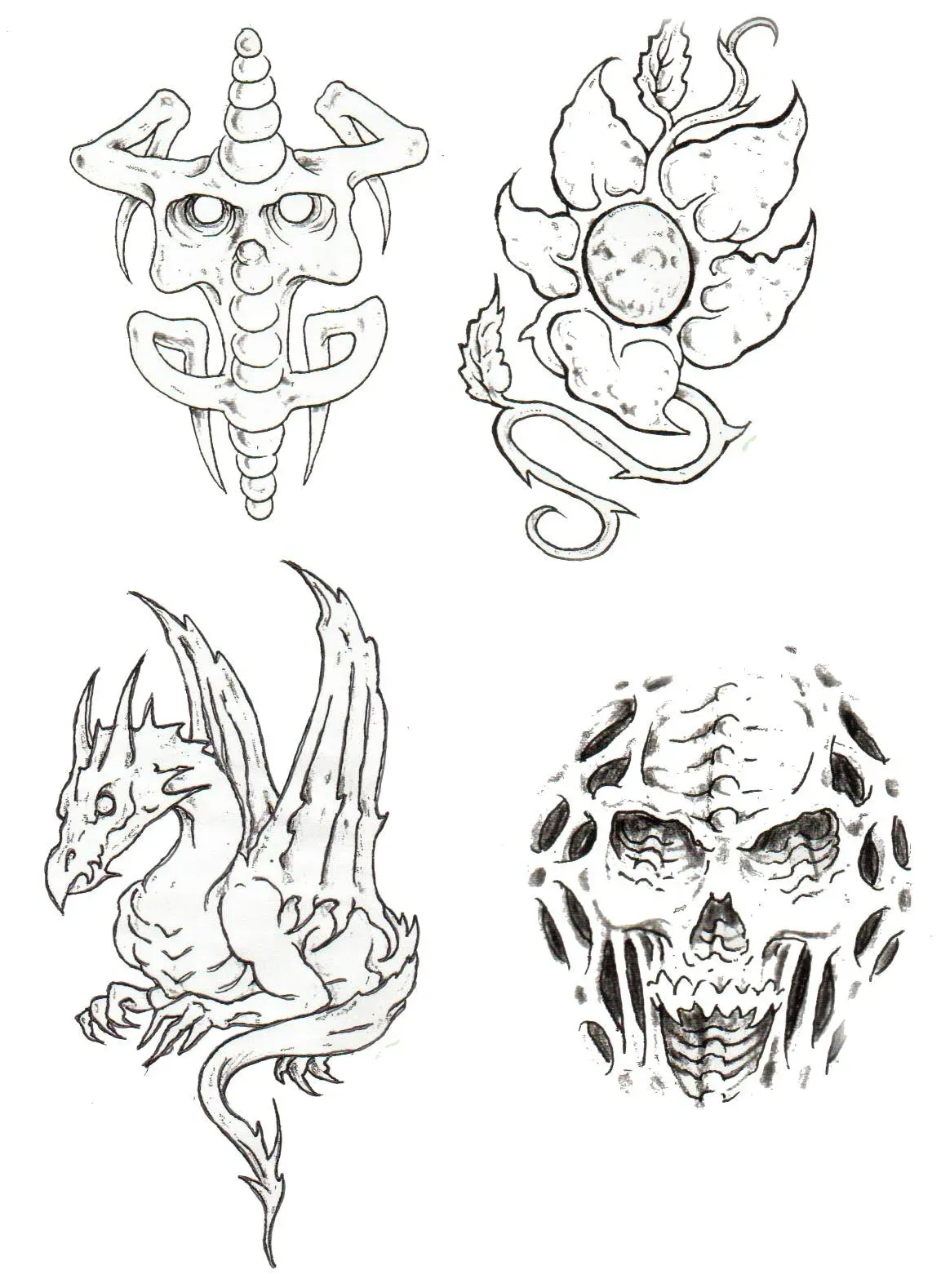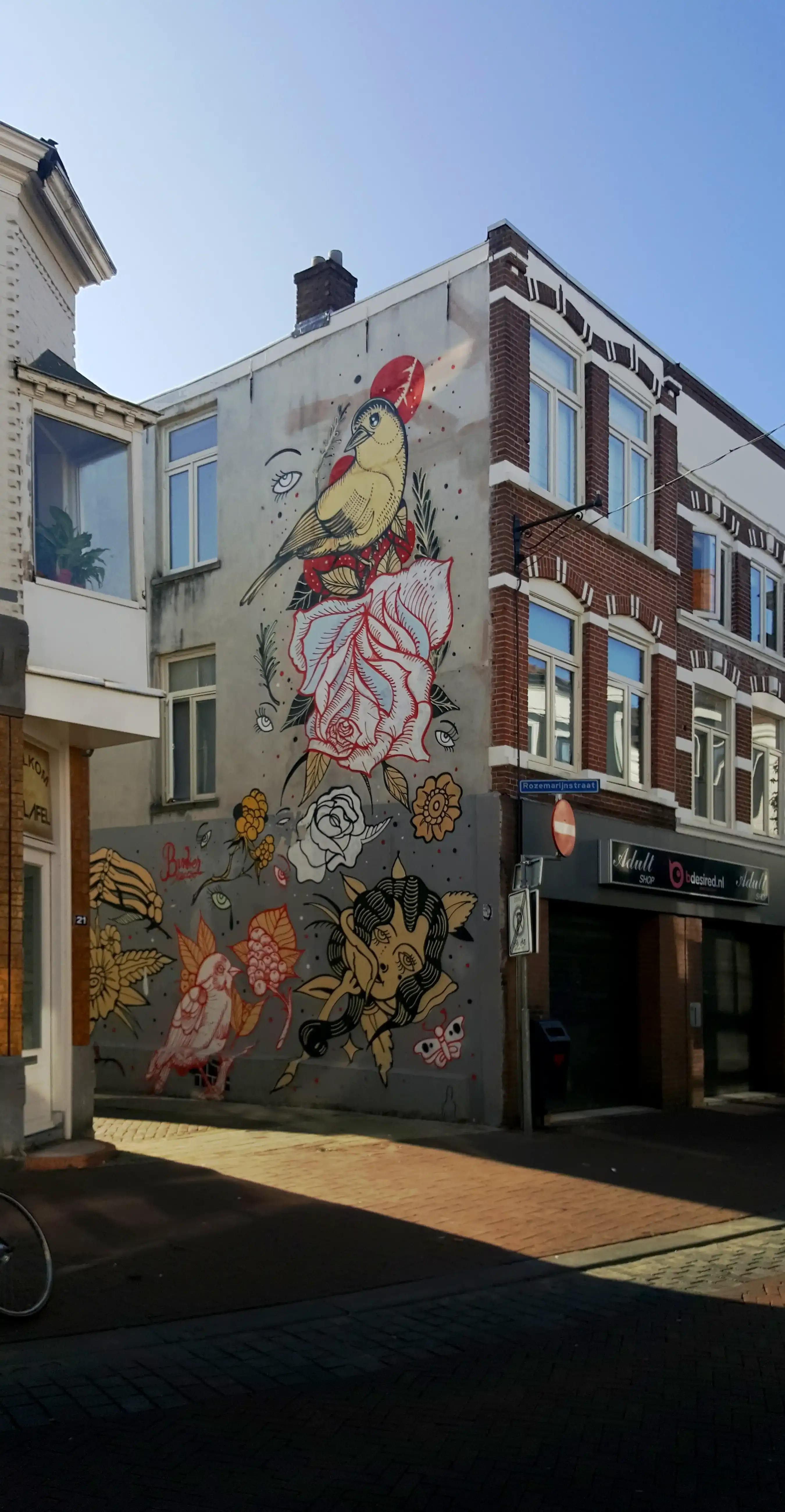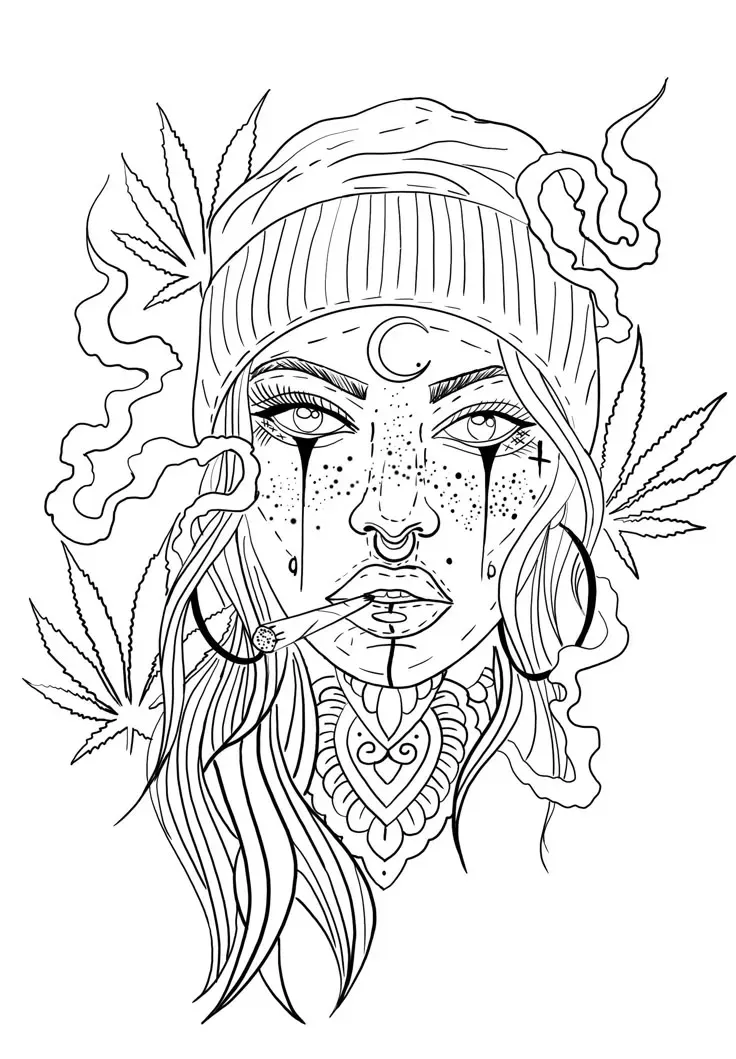Table of Contents
Getting a tattoo feels like a major life decision, doesn't it? The pressure to pick something monumental, packed with shading and color, can be overwhelming. What if you're not looking for a billboard on your body? What if you prefer a quiet statement, something elegant and clean? That's precisely where the enduring appeal of tattoo designs outline takes center stage. We're talking about art reduced to its essence – pure, unadorned lines defining form and shape. It's a style that relies on precision and negative space, proving that you don't need complex fills to make an impact. These aren't simply unfinished tattoos; they are a distinct aesthetic choice, favoring subtlety and form over dense detail. It’s a look that’s both modern and timeless, versatile enough for almost any subject. If the idea of a minimalist yet powerful design resonates, stick around. We’ll break down what defines the tattoo designs outline style, explore why it’s a surprisingly robust choice, look at some popular concepts, and give you the lowdown on getting one.
What Exactly Are Tattoo Designs Outline?
What Exactly Are Tattoo Designs Outline?
Alright, so you're diving into this world of ink, and you've stumbled upon "tattoo designs outline." What's the deal? Forget those big, bold pieces packed with color and heavy shading. Outline tattoos are exactly what they sound like: designs created using just the lines. Think of a drawing before you start filling it in. It's about defining the shape, the form, the essence of an image using only the contours. There's no shading, no solid blocks of color (usually, though some artists might add tiny touches of dot work or minimal stippling, the core remains the outline). It's a minimalist approach, relying on the strength and flow of the line itself to convey the image. This style demands precision from the artist because there's no shading to hide wobbly lines or mistakes. The clean lines stand exposed, making the skill of the artist paramount.
Why People Choose Tattoo Designs Outline
Why People Choose Tattoo Designs Outline
They Want Something Subtle, Not Shouty
Look, not everyone wants their tattoo to scream for attention across a crowded room. Sometimes you want something that feels personal, a little secret just for you, or maybe just a cool piece of art that doesn't dominate your entire limb. Tattoo designs outline hit this sweet spot perfectly. They're understated. They whisper instead of yelling. A delicate floral outline winding up an arm or a simple geometric shape on a wrist can be incredibly striking precisely because it isn't trying too hard. It's the difference between a full orchestral performance and a perfectly played single note. Both have their power, but the single note can resonate in a different, often more profound, way.
Outline Tattoos Are Incredibly Versatile
Think about it. An outline can be anything. A hyper-realistic portrait, a cartoon character, a complex mandala, a single word, a tiny symbol. Reducing an image to its basic lines works across a massive range of subjects and styles. You can get a tiny, almost hidden outline behind your ear, or a large, intricate piece covering your back. They fit on awkward spots like fingers or collarbones better than bulky, shaded pieces often do. Plus, because they use less ink and are less traumatic to the skin, they often heal faster and cause less fuss than their heavily filled counterparts. It's the chameleon of the tattoo world, adapting to whatever you throw at it.
They Offer a Foundation for the Future
Life changes, right? Maybe you get a tattoo outline now, and ten years down the line, you decide you want to add color, shading, or even turn it into a larger piece. Outline tattoos are fantastic starting points. An artist can easily build upon a clean outline, adding depth, detail, or transforming it entirely. It’s like getting the basic sketch done, leaving the door open for future artistic decisions. This flexibility is a huge draw for people who aren't 100% sure they want a full-blown, finished piece forever, or who might want to evolve their body art over time. It's a design choice that doesn't box you in.
Exploring Popular Tattoo Designs Outline Ideas
Exploring Popular Tattoo Designs Outline Ideas
Nature and Botanical Designs
When people think about tattoo designs outline, nature is often the first place their minds go. And for good reason. Flowers, leaves, trees, mountains – they all lend themselves beautifully to the clean lines of an outline tattoo. A single rose stem with thorns, rendered only in outline, can be incredibly elegant. A minimalist mountain range following the curve of an arm feels grounded yet expansive. Think about delicate wildflowers trailing along a collarbone or a bold, graphic outline of a pine tree on a calf. The natural shapes and organic flow work perfectly with this style, allowing the negative space to really make the design pop. It’s less about replicating reality and more about capturing the essence of the natural world with precision.
Geometric and Abstract Shapes
On the flip side of the organic, you have the precise world of geometric and abstract tattoo designs outline. This is where lines intersect, form patterns, and create intriguing visual puzzles without any shading or fill. Mandalas are a classic example, their intricate patterns formed entirely by interconnected lines. Simple shapes like circles, triangles, or squares can be combined to create larger, more complex designs that still maintain that clean, minimalist feel. Think of architectural elements reduced to their core structure, or abstract patterns that play with perspective and form. These outline tattoos appeal to those who appreciate order, structure, and designs that are open to interpretation. They require an artist with a steady hand and an eye for perfect symmetry (or intentional asymmetry).
What kind of outline tattoo design speaks to you most?
Getting Your Own Tattoo Designs Outline: What to Know
Getting Your Own Tattoo Designs Outline: What to Know
Picking the Right Artist for Your Outline Tattoo
so you're sold on the idea of a tattoo designs outline. Great choice. Now comes the critical part: finding someone who can actually pull it off. Outline work is unforgiving. There's no shading or color to mask a shaky hand or uneven line weight. You need an artist with a verifiable track record in fineline or single-needle work. Look at their portfolio. Do the lines look crisp? Are they consistent? Are curves smooth and straight lines actually straight? Don't just look at their big, bold pieces; specifically ask to see examples of their minimalist or outline work. A killer traditional artist might struggle with the precision required for a delicate outline. It's like asking a blacksmith to do filigree; different skill set entirely. Don't be shy about asking questions or requesting a consultation. This isn't the time to pick the cheapest option or your buddy who just got a machine.
- Check portfolios specifically for fineline/outline work.
- Look for consistent line weight and smooth curves.
- Don't rely solely on social media photos; visit the studio if possible.
- Ask about their experience with single-needle techniques if applicable.
Design Specifics for Outline Tattoos
When working with your artist on your tattoo designs outline, remember that less is often more, but precision is everything. The design needs to translate well to pure line work. Intricate details that might rely on shading for definition in a full-color piece might get lost or look muddy when reduced to a single line. Your artist can help simplify complex images or suggest ways to represent textures using line variation or minimal dot work if absolutely necessary, but the core should be the outline. Think about the scale too. Tiny, hyper-detailed outlines can blur over time as the ink settles under the skin. A good artist will advise you if your dream design needs to be a bit bigger or simplified to stand the test of time. They aren't trying to upsell you; they're trying to ensure your tattoo looks good years from now, not just on photo day.
Healing and Aftercare for Outline Tattoos
Healing an outline tattoo is generally less intense than a heavily shaded or colored piece, but that doesn't mean you can slack on the aftercare. The basic principles are the same: keep it clean, keep it moisturized, and keep it out of direct sun and soaking water. Because outline tattoos often use thinner lines, they might appear slightly raised initially, which is normal. Don't pick at scabs if they form (though often outline tattoos just flake lightly). Follow your artist's specific instructions to the letter. They know best for the ink and techniques they used. Proper aftercare is crucial for keeping those crisp lines sharp and preventing blowouts, where the ink spreads under the skin, blurring your perfect outline. Neglecting it means that cool, minimalist design you paid good money for could end up looking fuzzy way too soon.
The Final Line on Outline Tattoos
So, we've walked through the world of tattoo designs outline. They aren't some halfway point or a cheaper alternative to a fully shaded piece. They stand on their own as a legitimate, often sophisticated, form of body art. Choosing an outline means prioritizing form, clean lines, and negative space. It's a choice that speaks to a certain aesthetic – one that values clarity and understated cool. Whether it's a simple symbol, a delicate floral, or a complex geometric pattern reduced to its framework, the outline style offers a powerful way to wear art without the visual weight of heavy fill. It requires a skilled hand to execute well, as there's nowhere to hide imperfections. If you're considering one, understand its strengths and limitations, find an artist who nails the style, and you'll end up with a piece that proves less can indeed be more.